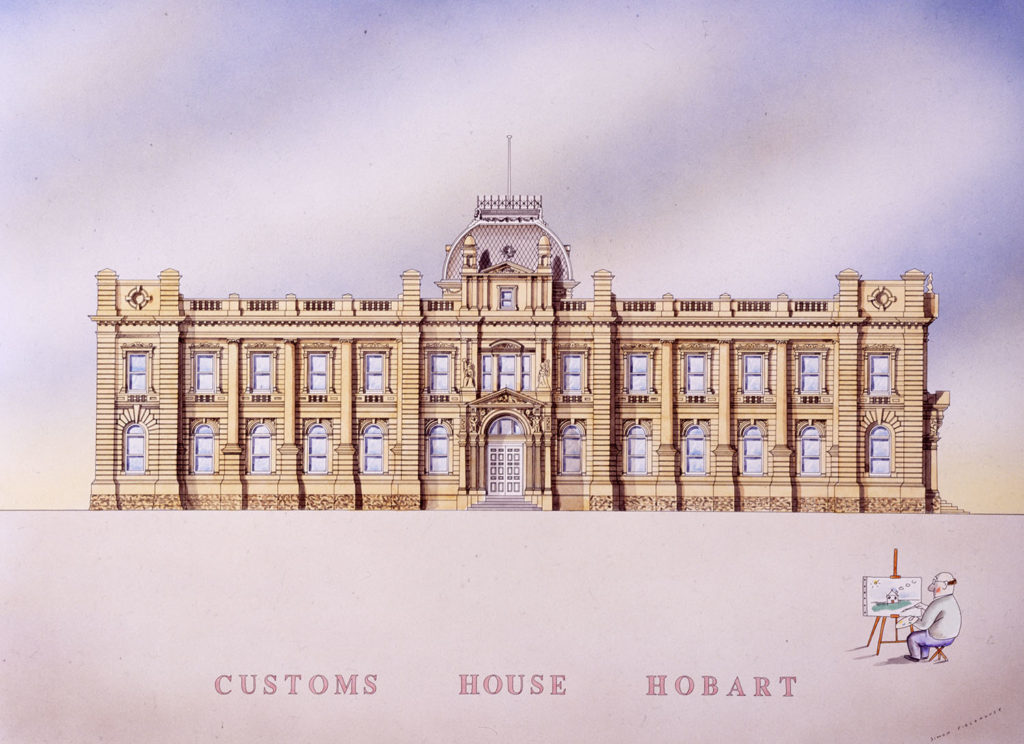
Customs House Hobart
Customs House Hobart: A Historical Gem of Hobart. Hobart, the capital city of the Australian island state of Tasmania, boasts a rich and vibrant history that is preserved in its architecture, landmarks, and institutions. One such historic gem is the Customs House Hobart, a building that has played a significant role in the maritime history of the city. This essay explores the history, significance, and architectural beauty of Customs House Hobart.
Historical Significance
Customs House Hobart, located on Elizabeth Street Pier, is a testament to the maritime heritage of the city. It was designed by renowned architect John Lee Archer and constructed between 1840 and 1841. The building was commissioned during a time when Hobart was a bustling port and trade hub, and the Customs House played a crucial role in regulating the flow of goods and collecting taxes on imports and exports. Its presence signified Hobart's importance in the context of Australia's early maritime trade.
The architectural design of the building is a fine example of Georgian-style architecture, characterized by its symmetry and classical features. The sandstone façade, tall windows, and Ionic columns lend an air of grandeur and timelessness to the structure. The building's prominent position on the waterfront allowed for efficient handling of cargo, while its majestic appearance served as a symbol of the city's prosperity and prestige.
Adaptive Reuse
Over the years, as the maritime trade in Hobart evolved and the functions of the Customs House changed, the building underwent several transformations. It was used as a post office, and later as the Hobart Art Gallery and Museum. Today, the Customs House is home to the Henry Jones Art Hotel, a luxurious accommodation option that beautifully blends the building's heritage features with modern comforts.
The adaptive reuse of Customs House Hobart is a testament to the city's commitment to preserving its historical landmarks while also ensuring they serve contemporary purposes. It allows visitors to experience the charm of a bygone era while enjoying the amenities of a world-class hotel.
Cultural Importance
Customs House Hobart is not only a historic structure but also an essential cultural and artistic hub. The nearby waterfront and galleries, like the Tasmanian Museum and Art Gallery, offer tourists and locals an opportunity to explore Hobart's rich history and vibrant art scene. The Customs House's proximity to these cultural institutions makes it an integral part of the visitor experience in Hobart.
Conclusion
Customs House Hobart is more than just a building; it is a symbol of Hobart's maritime history and cultural heritage. Its historical significance, architectural beauty, and adaptive reuse exemplify the city's commitment to preserving its past while embracing its future. As one stands before Customs House, they can't help but feel the echoes of the past and the promise of a thriving future, all in the heart of this charming Australian city.
Sandstone Facade: The building's facade is constructed primarily from locally quarried sandstone, which gives it a timeless and elegant appearance. The warm, golden hues of the sandstone create a stunning contrast with the blue waters of the harbor, making the Customs House a visual centerpiece on the waterfront.
Ionic Columns: One of the most striking features of Customs House Hobart is its row of imposing Ionic columns, which line the front of the building. These columns are not merely decorative but serve an architectural purpose by supporting the entablature above the entrance. The Ionic order is known for its scroll-like capitals, which add a touch of sophistication and grandeur to the structure.
Windows and Roofline: The tall, rectangular windows of the Customs House are framed with fine detailing, and their size allows ample natural light to flood the interior. The building features a hipped roof, typical of Georgian architecture, which is covered with slate tiles. The roofline is unadorned, maintaining the simplicity and classic elegance of the overall design.
Portico and Entryway: The portico, supported by the Ionic columns, forms an inviting entrance to the building. It provides shelter from the elements and serves as a focal point, drawing attention to the entrance. The central doorway is adorned with decorative molding and pilasters, further enhancing the building's architectural charm.
Interior Details: While the exterior is a stunning display of Georgian architecture, the interior of Customs House Hobart also boasts fine craftsmanship. Visitors can admire ornate plasterwork, intricate cornices, and decorative elements that showcase the craftsmanship of the period.
In conclusion, Customs House Hobart is a masterful example of Georgian architecture, with its sandstone facade, Ionic columns, and meticulous attention to detail. The building's architectural features not only make it a historical treasure but also contribute to its cultural and aesthetic significance in Hobart. It stands as a testament to the architectural achievements of the 19th century and continues to inspire admiration for its timeless beauty and historical importance.